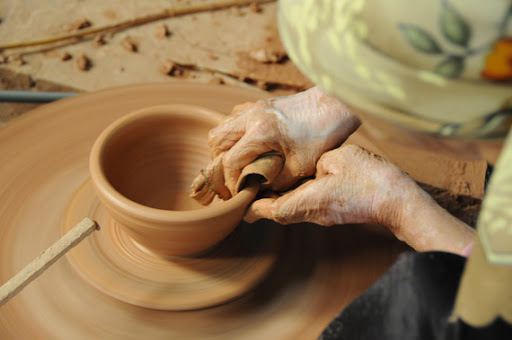
Vietnam is a country with a rich history and culture, and its traditional crafts villages play an important role in preserving this heritage. These villages are home to skilled artisans who have passed down their craft from generation to generation. Vietnamese customs, traditions, and cultures, all can be seen through these products. So, if you have a chance to visit Vietnam, don’t forget to add one of the below traditional craft villages in Vietnam to your list.
Bat Trang Pottery Village – Hanoi
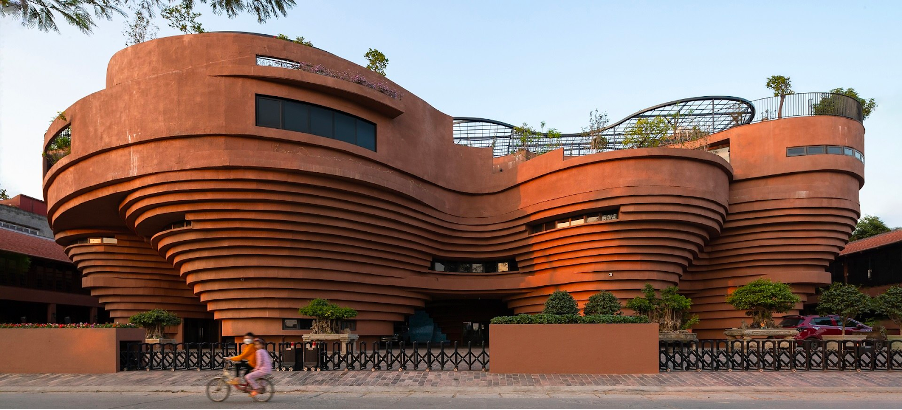
Bat Trang Pottery Village has been famous for a long time, not only within the territory but also known by many countries and ethnic groups in the world. This name is associated with its place name Bat Trang commune (now in Gia Lam district, Hanoi). Thanks to the technique of creating glaze and precise kiln technique, the artisans here have created a special type of ceramic product, harmonious in composition, elegant color, and human sophistication – ceramic, Bat Trang.
Bat Trang ceramic products have always been appreciated for their quality, having many designs, models, and types, divided into groups according to their functions, such as household ceramics, worship items, and fine ceramics. art, construction ceramics, and decorative ceramics. Bat Trang pottery is circulated all over the country, even to foreign countries. Bat Trang Pottery Village is not only a place to create a national product brand, contributing to preserving the cultural values of the capital, but also one of the most popular tourist destinations in Hanoi. At Bat Trang village, there are plenty of activities for tourists, including directly making pottery products, taking a walk around the village, or joining a buffalo tour for shopping and sightseeing.
2. Quat Dong Embroidery Village (Hanoi)
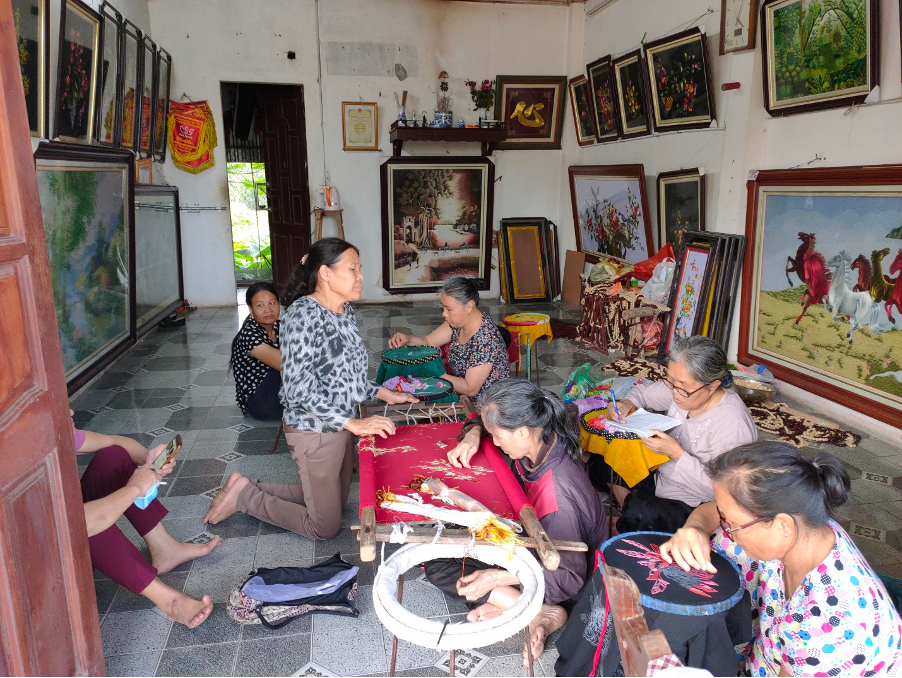
20 km from Hanoi, Quat Dong embroidery village is famous nationwide for its unique embroidery technique. For most Quat Dong villagers, embroidery is considered as their long-standing tradition. The intricate needlework was done by all villagers, regardless of gender or age. Everyday, they will spend a dozen hours creating their lively artwork. Witnessing how the villagers do their work, you can admire how the wonderful art has been created from the simple cloth to marvelous and beautiful pieces. The magic lies in the colorful threads and the small needle and the passion of the local villagers. Without the passion, no one can sit for hours and use the needle to make such aesthetic cloth. The products have different designs such as folktale scenes, flowers, countryside landscape, or a beautiful woman.
3. Van Phuc Silk Village (Hanoi)
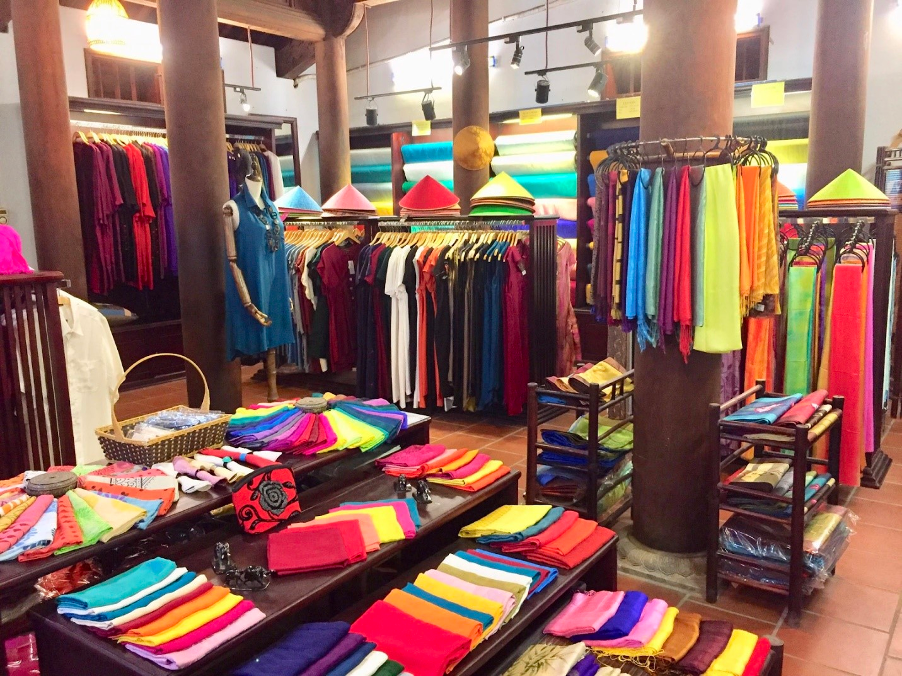
Although only about 10km from the center of Hanoi city, this village on the Nhue river still retains the features of a traditional craft village such as the image of an ancient banyan tree, a well, a communal courtyard, and still in the afternoon. market meeting under the banyan tree in front of the communal house. Stepping to the village gate, I heard every “clack” of the looms coming from the weaving workshops.
The ancestor of silk weaving in Van Phuc is named Le Thi Nga, and now there is a temple to worship her in the village. Van Phuc silk is famous for its “smooth face, cool hands”. Various silk products: Van Phuc silk, silk silk, silk silk, cinnamon silk, brocade… Van Phuc silk is not only consumed domestically but also exported to many countries. countries in the world.
4. Kim Son Sedge Mats Village (Ninh Binh)
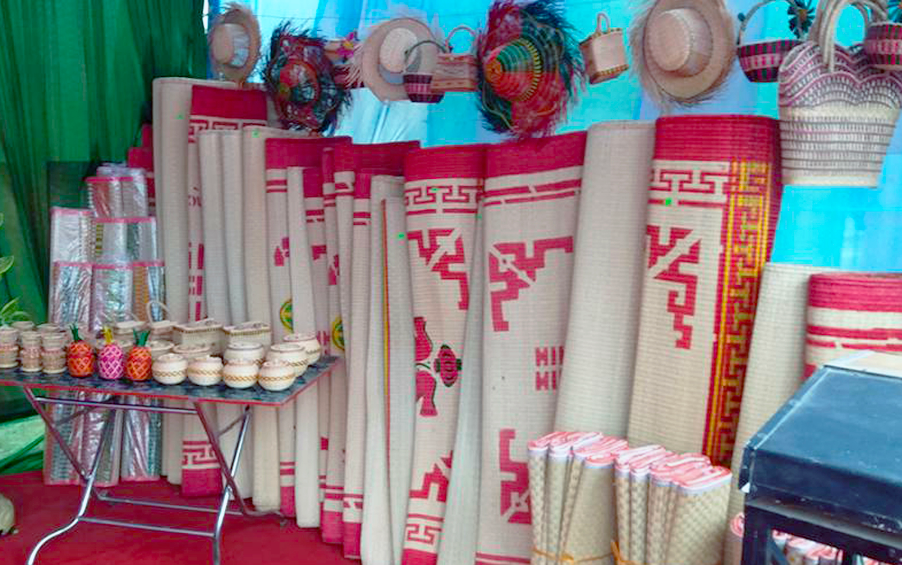
Kim Son Sedge Mats Village is located in Ninh Binh, and is known for its production of high-quality sedge mats. The village has been producing sedge mats for over 300 years, and its products are known for their durability and beautiful designs.The eye-catching patterns on the mats express the talent of the craftspeople.
In addition to sedge mats, people in Kim Son also make carpets, baskets, trays, boxes, plates, cups, hats, handbags,… with sedge. These products are sophisticated. And they are natural friendly as well, so they attract the love of foreign customers and have a firm position in foreign markets. Visitors to Kim Son can see the mat-making process firsthand, and purchase a variety of sedge mats, including traditional and modern designs.
5. Dong Ho Folk Painting Village (Bac Ninh)
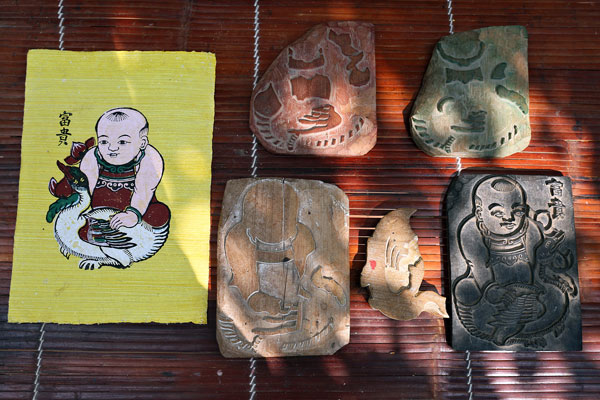
Dong Ho is a famous folk painting village in Vietnam, Dong Ho belongs to Thuan Thanh district, Bac Ninh province. Folk painting here has existed for a long time. In the past, the village only painted paintings to sell during the Lunar New Year, but now, Dong Ho folk paintings are painted even on weekdays to serve tourists. The raw materials for painting are Dó paper and the colors are: young bricks, leaves, and roots burned into charcoal to make 5 main colors including green, red, yellow, black and indigo.. In order for the painting to be iridescent, people use seashells and clams to make lime, make small imitations, mix it with tree sap, spread it evenly on Dó paper, and then start painting.
Dong Ho folk paintings have many areas such as animal paintings: dogs, cats, buffaloes, cows, chickens, pigs… the array “catching coconuts; mouse wedding; fighting jealousy” is very pleasing to the eye. expressing the desire for peace, happiness, prosperity… so it is often hung in the house during the spring holidays.
6. Chuong Conical Hat Making Village (Hanoi)
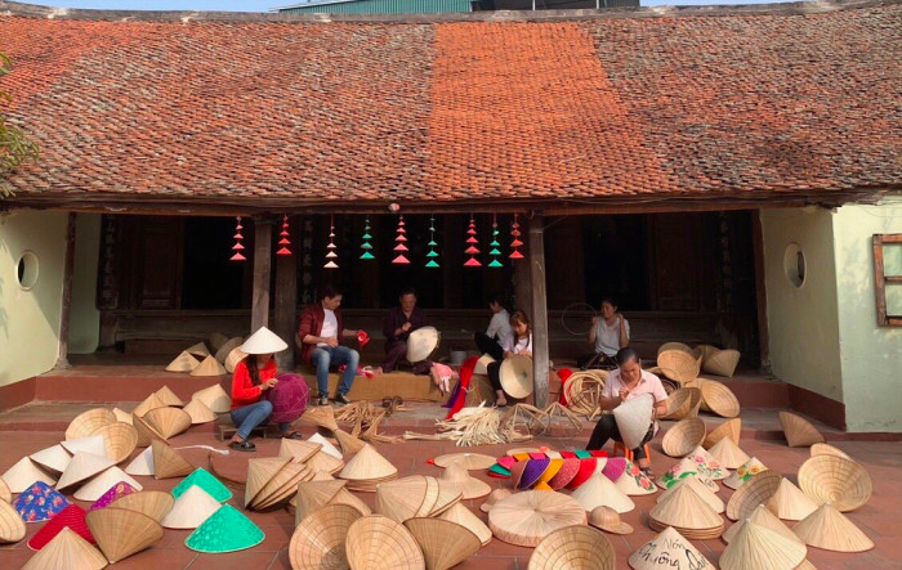
Conical hat, along with “ao dai”, is considered as the iconic symbol of Vietnamese women’s costumes. Have you ever wondered how Vietnamese conical hats are made? Let’s head to Chuong conical hat making village located on the west of Hanoi. Many generations in the village have worked quietly to keep and uphold this long standing custom of making traditional conical hats. Obviously, you can easily buy a conical hat in other places; however, the products of Chuong village are still the best. Made from palm leaves from Quang Binh province, silk thread from Trieu Khuc village, and bamboo from Hoa Binh province, these hats are stunning and robust. You can use the conical hat to shelter from the rain and sun, as well as give it to your friends as a souvenir.
7. Vong Green Young Sticky Rice Making Village (Hanoi)
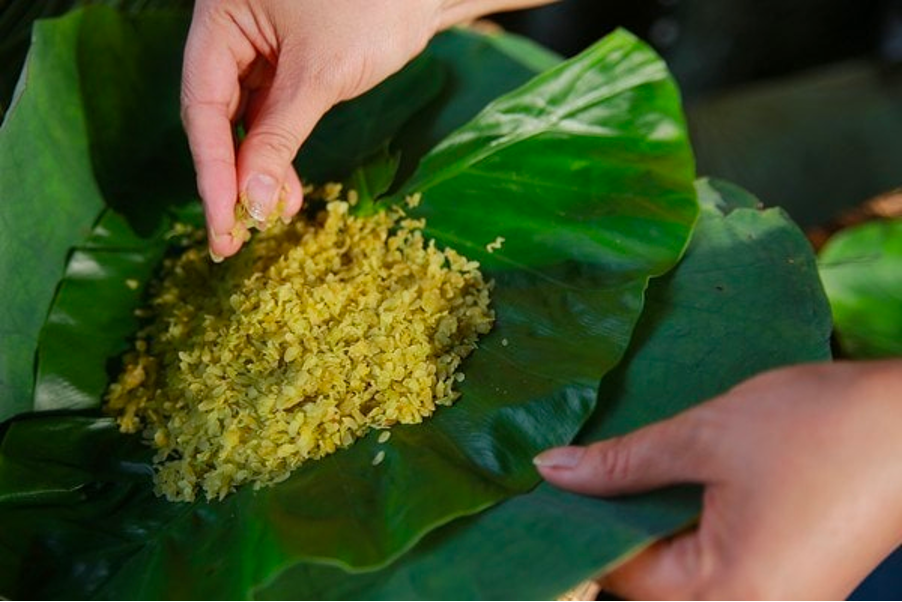
Vong village in Hanoi, is said to produce the best green sticky rice in Vietnam.This specialty is a favorite elegant food in the fall season. The special taste of green sticky rice will be a great gift for many travelers. This food can be eaten by hand, and usually served with ripe bananas. Eating green sticky rice slowly, you will appreciate the scents, the tastes, and the sweet, buttery, and nutty taste of the young rice.
8. Chu Dau Pottery Village – Hai Duong
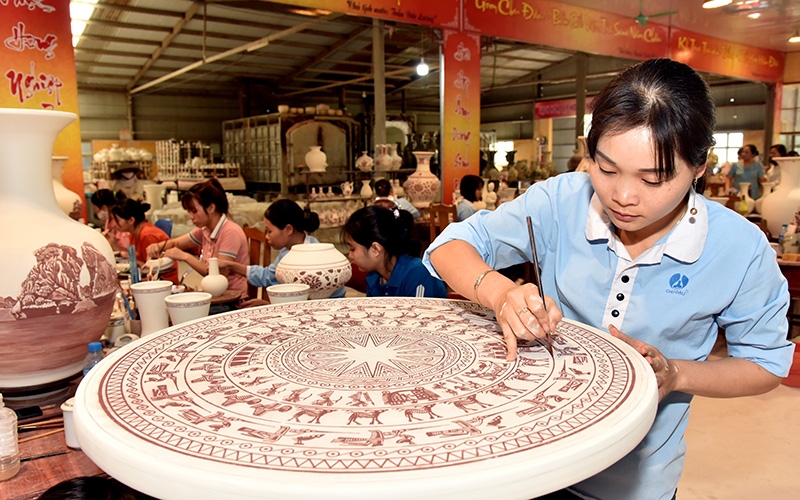
Chu Dau pottery village in Thai Tan commune, Nam Sach district has been famous in the world for more than 500 years. Chu Dau ceramic products are being kept in many national museums around the world such as Turkey, France, Belgium, Japan, the Netherlands… and in private collections of many countries around the world. One of the highlights of Chu Dau pottery is the pattern lines. Chu Dau’s ancient patterns are mostly lotus and chrysanthemums, in many different forms and dozens of other stylized patterns.
Experts highly appreciate Chu Dau ceramics from appearance, enamel, textures, decorative patterns… all of them are perfectly beautiful. Chu Dau pottery is shown in many forms such as drawing, engraving, painting, embossing, which are liberal, lyrical, harmonious and sophisticated. The motifs and patterns on the ceramic show boldly the cultural identity of the Vietnamese nation. The products are shown on white enamel, blue enamel, or three-color enamel.
9. Bau Truc Pottery Making Village (Ninh Thuan)
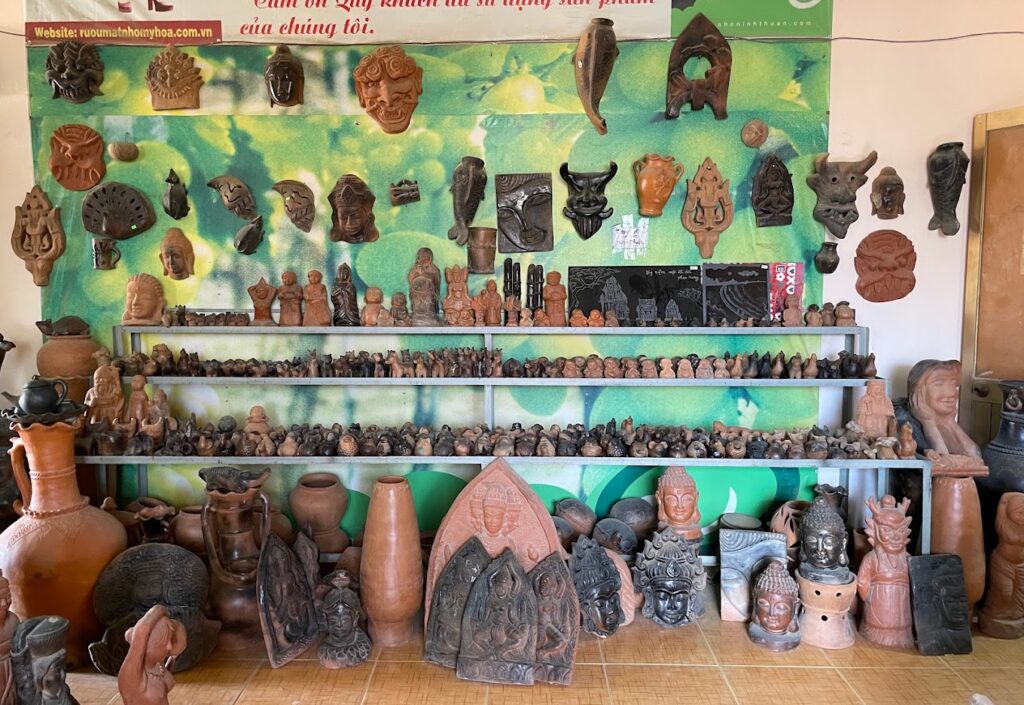
If you have a chance to visit central Vietnam, don’t forget to visit Bau Truc pottery making village – the oldest pottery village in Southeast Asia. Located about 10 km from the south of Phan Rang town, it is home to more than 400 families, of which about 85% make a living by traditional pottery making craft.
The village has existed for over 200 years and most of the households are Cham people. Bau Truc is also named after the original name Paley HamuTrok – meaning the part at the end of the river. Its pottery craft started by a Cham man called Poklong Chan and has remained well until now. Unlike other traditional craft villages, Bau Truc looks very spacious and modern with concrete-paved streets, houses with red roofs, and stores. Coming here, you will see all the households busy with their works as well as instructing other visitors. Every product from the village is identical, featuring the daily life of Cham people. Decorated with available items like simple flowers, seashells, or hand-made paintings, the products still look impressive.
10. Non Nuoc Stone Carving Village (Da Nang)
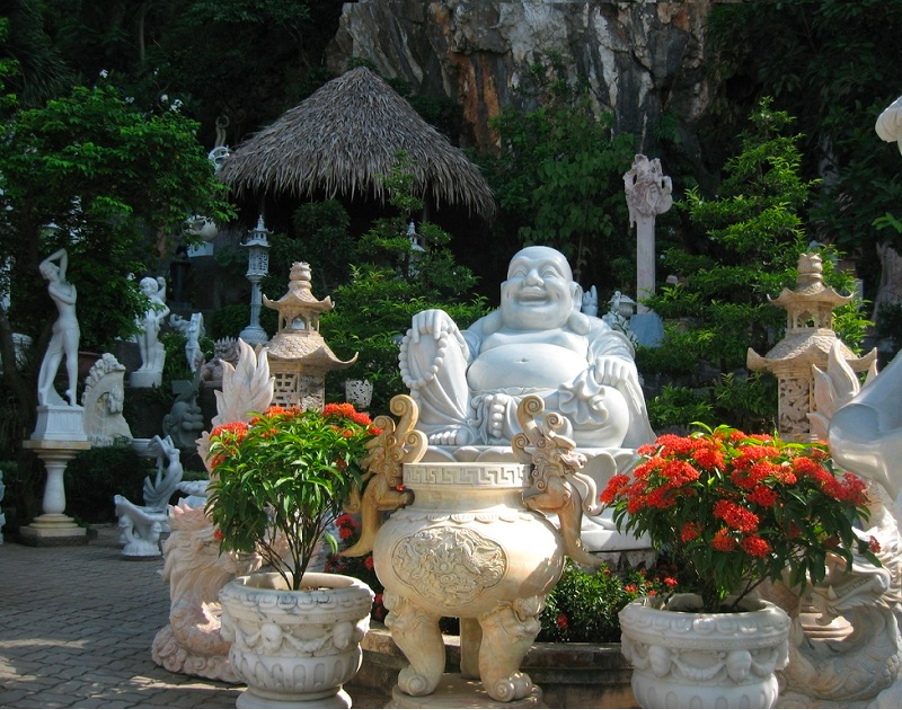
Non Nuoc stone handicraft village, located in Hoa Hai ward, Ngu Hanh Son district, Da Nang city, This is a famous marble handicraft production place in the country and abroad. Perhaps no one comes to Ngu Hanh Son without visiting this craft village. The village was formed in the 18th century by Thanh Hoa artisan named Huynh Ba Quat. This fine art stone village is the intersection between the ancient Vietnamese and Champa cultures, bringing diversity and richness to the products of this craft village.
Later, when the country had an exchange with world culture, artisans from all over the world came here to learn and exchange experiences, since then art statues have flourished up to now, with their creativity. With their diligence and diligence, the artisans have created extremely delicate, sharp, meticulous, diverse designs that make many tourists come here to admire and praise.
11. Kim Bong Carpentry Village (Hoi An – Quang Nam)
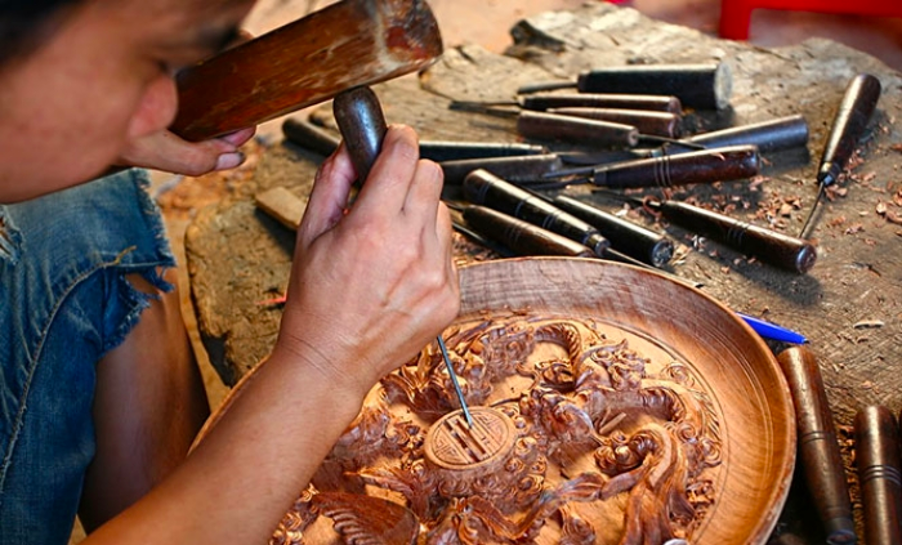
Kim Bong Carpentry Village is located on Cam Kim Commune, Hoi An, Quang Nam, Vietnam. It is a traditional carpentry village that has been around for over 500 years. The village is known for its skilled artisans who produce high-quality wooden furniture, statues, and other handicrafts.
Kim Bong Carpentry Village was founded in the late 15th century by a group of carpenters from the north of Vietnam. The village quickly became known for its skilled artisans and high-quality products. In the 16th and 17th centuries, the village was a major supplier of wooden furniture and other handicrafts to the royal court in Hue. Today, Kim Bong Carpentry Village is still a thriving community of carpenters. The village is home to over 100 workshops that produce a wide range of wooden products, including furniture, statues, souvenirs, and home décor.
12. Phuoc Kieu Bronze-casting Village (Quang Nam)
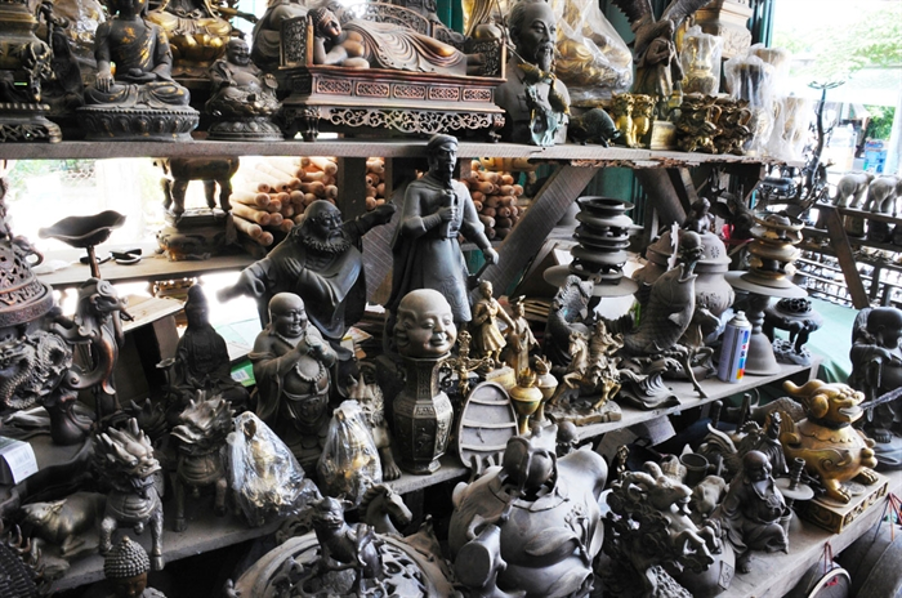
Phuoc Kieu Bronze-casting Village (Quang Nam) is a traditional village in Dien Ban District, Quang Nam Province, Vietnam. It is located about 10 km from Hoi An, 50 km from Tam Ky city, and 30 km from Da Nang city. Phuoc Kieu village is famous for its bronze casting craft, which has been passed down from generation to generation for over 400 years.
The bronze casters in Phuoc Kieu use a variety of traditional techniques to produce a wide range of products, including gongs, bells, incense burners, lamp holders, ancient vases, and other bronze musical instruments. The gongs produced in Phuoc Kieu are particularly famous for their high quality and beautiful sound. In addition to producing bronze products for sale, the bronze casters in Phuoc Kieu also play an important role in preserving and promoting Vietnamese traditional culture. They often perform at festivals and cultural events, and they teach their skills to younger generations.
13. Tan Chau Black Silk Village (An Giang)

Tan Chau Black Silk Village is a traditional silk village located in Tan Chau Town, An Giang Province, Vietnam. It is famous for its high-quality black silk, which is made using a special dyeing process that uses the fruit of the Diospyros mollis tree. Tan Chau black silk is known for its softness, durability, and unique color.
Tan Chau silk has been produced for centuries, and the village was once a major center for silk production in Vietnam. However, the silk industry declined in the early 20th century, due to competition from imported silk and the effects of war. In recent years, there has been a revival of the silk industry in Tan Chau, and the village is now one of the leading producers of black silk in Vietnam.
The silk-making process in Tan Chau is a complex one, and involves many different steps. The first step is to collect the cocoons from the silkworms. The cocoons are then boiled to kill the silkworms and loosen the silk fibers. The silk fibers are then reeled onto a bobbin, and then woven into fabric.
14. Ben Tre Coconut Candy Village (Ben Tre)
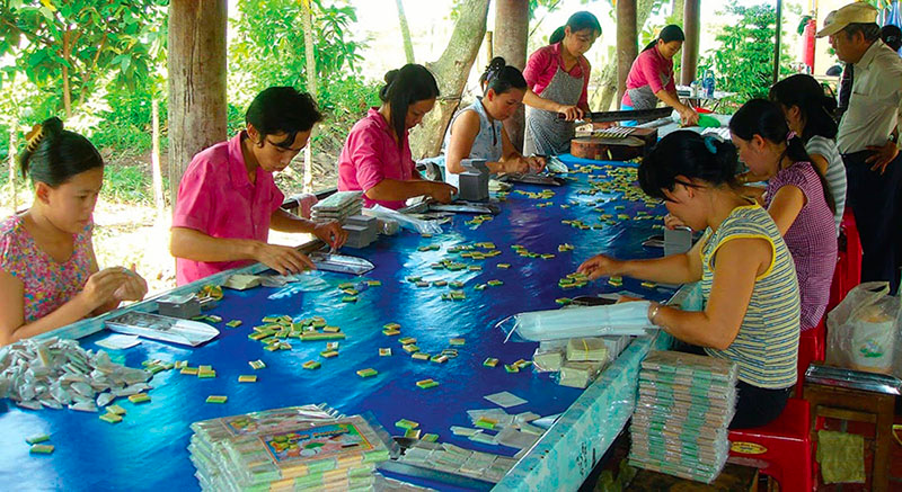
Ben Tre Coconut Candy Village is a popular tourist destination in Ben Tre province, Vietnam. It is a place where visitors can learn about the traditional process of making coconut candy, a popular Vietnamese sweet treat.
The village is located in Mo Cay Nam district, about 20 km from Ben Tre city. It is home to hundreds of families who have been making coconut candy for generations. The candy is made from fresh coconut milk and sugar, and is cooked over a wood fire in large pots.
Visitors to the village can watch the candy-making process firsthand, and even try their hand at making their own. There are also several shops in the village where visitors can buy coconut candy and other local products.
15. My Nghiep Brocade Weaving Village – Ninh Thuan
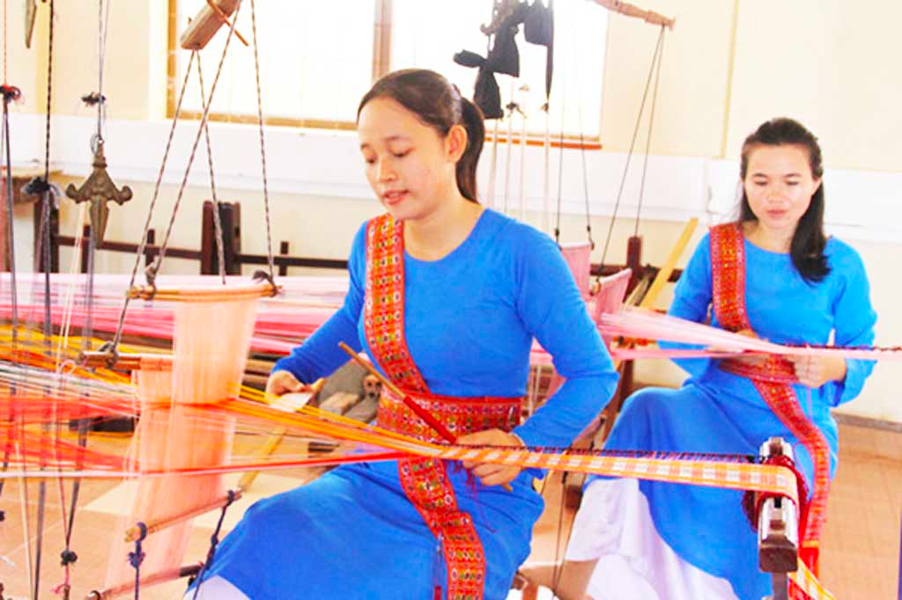
My Nghiep Brocade Weaving Village is a traditional village of the Cham ethnic people in Ninh Thuan province, Vietnam. It is located about 12 kilometers southeast of Phan Rang city. My Nghiep is known for its high-quality brocade weaving, which is a centuries-old tradition of the Cham people.
Brocade weaving is a complex process that requires a high level of skill and experience. The weavers use a variety of natural materials, such as cotton, silk, and wool, to create intricate and colorful patterns. My Nghiep brocade is known for its sharp lines, rich colors, and geometric and floral motifs.